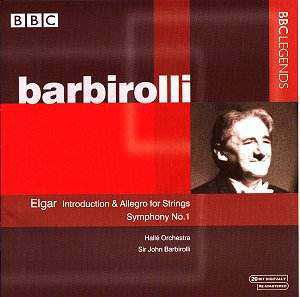|
|
Search MusicWeb Here |
|
 |
||
|
Founder:
Len Mullenger (1942-2025) Editor
in Chief:John Quinn
|
|
|
Search MusicWeb Here |
|
 |
||
|
Founder:
Len Mullenger (1942-2025) Editor
in Chief:John Quinn
|
RECORDING OF THE MONTH
 |
John BARBIROLLI (1899-1970) |
|
|
BUY NOW |
||
As Michael Kennedy narrates in his fine essay which accompanies this invaluable disc, Sir John Barbirolli had said to him a few weeks before this concert, recorded live on 24 July 1970, ‘You know every concert now might be my last’. It was an eerily prescient remark for Barbirolli died on 28 July, and this concert was his last with his beloved Hallé Orchestra and the last music by Elgar which he ever conducted. The Norwich Festival, with his friend Lady Ruth Fermoy at its epicentre, was an event to which he always gave priority in his diary of engagements even if it meant coming back from foreign lands to conduct at it. The two works he directs here were both close to his heart, and remind us of Barbirolli the cellist of his early professional career, consummately at ease in an all-string environment. No grunts and groans here as in the days of the vinyl recording titled ‘Barbirolli conducts English string music’ but you sense every gesture, every impulse and every nuance which he invests in this stirring interpretation. He makes it what it is, one of the classics of its genre in the 20th century and recorded it six times between 1927 and 1962. This may not qualify as a ‘recording’ because it is a live performance but I am convinced it is his finest account. It is full-blooded from the start with its strikingly bare open-strings of Gs and Ds to the final, immaculately placed pizzicato of joyous G major. True those screamingly awkward rising passages leading to the dizzy heights and a top A which the poor concertino violins have to contend with two bars before figure 12 (marginally easier at a tone lower at the corresponding place before figure 27) would have had to be recorded again (perhaps more than a few times for the Hallé strings are not always pin-point accurate here and elsewhere) but in terms of spirit, élan and style, it would be a hard recording to beat. |
|
Return to Index |